
Publisher:
Bonnie King
CONTACT:
Newsroom@Salem-news.com
Advertising:
Adsales@Salem-news.com

~Truth~
~Justice~
~Peace~
TJP
Jun-28-2023 19:37


 TweetFollow @OregonNews
TweetFollow @OregonNews
What Do We Mean by Environmental Justice? A Legacy of Greenaction
Robert Lundahl special to Salem-News.comMore sacred sites lost. All in the name of Capitalism and Greed.
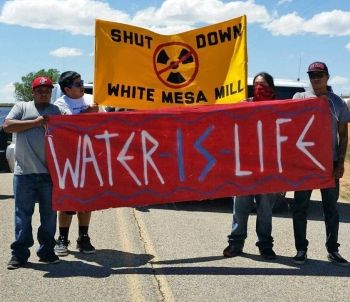 |
(LOS ANGELES, Calif.) - Life takes us on circuitous routes. Do we follow a straight line of integrity? Maybe, but life has a way of picking us up and planting us back right down where we left off. Full circle.
After many years practicing my craft of filmmaking for clients, I engaged in a contract with a cause, raising awareness of toxic and contaminated sites nearby where people lived.
This led me to get to know a network of activists, native elders and Tribes, attorneys and allies. It was a route of evidence, a route of truth and reconciliation, a route of empathy and battle, such that after a while, though victorious and inspired, I needed a break.
But when invited by a Native American Apache colleague, a working knowledge of environmental and American Indian Law brought me back in, realizing that in 2023, laws on the books are conspicuously and tactically ignored.
Bradley Angel was one of the key individuals in this network, whom I had met in earlier days. He is the connecting force between several indigenous and non-indigenous storytellers I gratefully interviewed for the podcast series “Climate Change is Here” on Apple Podcasts (www.climatechangeishere.com).
For over 35 years, Bradley has been a local and national leader in the environmental health and justice movement and has helped communities win some of the most significant victories in the history of that movement.
In 1990, Bradley helped bring together grassroots Indigenous leaders in the first Protecting Mother Earth/Toxic Threat to Indian Lands Conference which led to the formation of the Indigenous Environmental Network.
In 2008, Bradley was one of five people from around the world chosen as a recipient of 2008 Lannan Foundation’s Cultural Freedom Award in recognition of his decades of work with hundreds of diverse communities and Native Nations impacted and threatened by pollution and injustice.
In 2014 Bradley was the recipient of the 2014 “Environmental Justice Angel Award” from the East Los Angeles Community Youth Center for his environmental justice work empowering and supporting youth and Latino communities.
Bradley played a lead role in the landmark settlement in 2016 of the Title VI Civil Rights complaint filed by Greenaction and El Pueblo of Kettleman City that successfully challenged racially discriminatory actions by state agencies in environmental decision-making.
What do we mean by Environmental Justice?
A Legacy of Greenaction
Exclusive interview with Bradley Angel
Bradley Angel:
My name is Bradley Angel and I am the Director of Greenaction for Health and Environmental Justice. Greenaction is a multi-racial grassroots organization founded in late 1997 by grassroots leaders from urban, rural and indigenous communities that I had worked with for about 10 or 11 years prior to forming Greenaction.
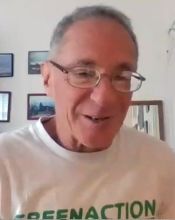 Bradley Angel |
We work on the wide range of pollution, health and justice issues affecting urban, rural, indigenous communities, primarily in the west and very occasionally as capacity allows a little further– but primarily across California, Arizona, Nevada, and Utah- our main battlegrounds.
Robert Lundahl:
You've been working in Utah for something like 20 years and I know you spend a great deal of time there, so, can you tell me a little bit more about White Mesa and what's going on?
Bradley Angel:
Yeah, I started working with communities in Utah around issues of existing and proposed hazardous waste disposal facilities back in the late 1980s, before Greenaction even existed.
That was quite an interesting experience working in a lot of pretty conservative, rural, primarily Mormon communities, not known as environmentally-friendly, you know, didn't have that reputation but, in fact, everybody is concerned about their health, and everybody is concerned about the air they breathe and the water they drink and the communities they live in, so those were some early epic battles.
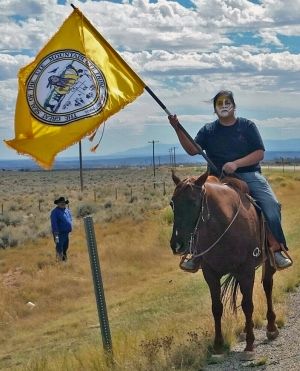
A lot of my early work before Greenaction was with Greenpeace USA. I was what they call the Southwest Toxics Campaigner, and I helped them diversify their organization at the time with my colleagues across the country.
I helped Greenpeace, at the time, work more respectfully and effectively with communities and I'm glad to say I was even proud that I was able to help repair relations that the big, giant, International Environmental Group had with indigenous people.
However, that was somewhat short-lived, and in 1997, Greenpeace International took over Greenpeace in the U.S and just about extinguished, wiped out the toxics program, and the environmental justice and Indigenous lands programs.
I was senior staff. I could have stayed doing something else, but I quit and submitted my resignation.
And one of the main reasons was not only just abandoning communities, which I wanted no part of, but communities really wanted a group that they would lead, and they asked me to work with them.
Through that period and then the battle led by the Mojave tribe and other Lower Colorado River tribes, an epic battle that defeated a proposed nuclear waste dump at a place called Ward Valley in the Mojave Desert.
That fight culminated in a 113 day occupation that led to the victory, and again through that work, it just continued a lot of my work with indigenous communities and native nations, for about 20 years now.
Because I live part of the time in Southern Utah, many years ago I was introduced to the White Mesa Ute community and which is part of the Ute Mountain Ute tribe, and White Mesa is a beautiful a little Community up on a Mesa, White Mesa, near the recently designated Bear's Ears National Monument.
The Last Uranium Mill
Bradley Angel:White Mesa is just one of the most beautiful places you can imagine, so back in the 70s, the government let a company build a uranium mill in this beautiful place.
They built it pretty much on the fence line of the White Mesa Ute community and literally on top of hundreds of ancient sites including ceremony sites and burials.
For decades now the people of the White Mesa Ute Community have been exposed to radioactive and toxic poison and desecration of their sacred sites and a threat to their health, environment, lives, and culture.
So, I've been working with the White Mesa residents who have an organization called White Mesa concerned community. We're glad that working with them and increasingly the tribal government has been playing a pretty active and important role, really standing up for their tribe, for their community and environment and culture, and that is also just becoming an enormous battle of profound importance.
It's the last uranium mill in the United States, and it is turning into an international radioactive waste facility. So the battle is on and we could talk more about that.
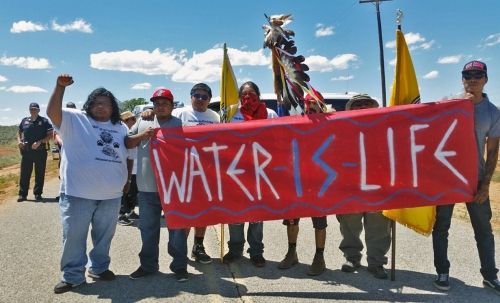
Robert Lundahl:
Wow, well I've been to that area and I've been to Hovenweep. Do you know what that is?
Bradley Angel:
Of course.
Robert Lundahl:
That's just an amazing area. The ancient architecture and the way you can learn about how people lived by what they built, and a lot of it is there, and it's just a precious resource, a knowledge base for us and obviously very important to many tribes, so when Bears Ears (National Monument) was formed nearby, several tribes came together, right, and lobbied.
Bradley Angel:
Yes, there's a Bear's Ears Intertribal Coalition because the Bear’s Ears is a vast area.
It's named after a formation that looks like bear's ears, and in the languages of the tribes in that region, it translates, I understand, I've been educated about, into something resembling the words “bear's ears”, and it really stands out on the horizon.
From White Mesa you have Bears Ears really close by, and directly to the east is also Sleeping Ute Mountain, which is one of the sacred places of the Ute, as I've again been educated about.
Real people with kids and lives and families and hope
Bradley Angel:White Mesa sits not just in a beautiful scenic place, but one of profound cultural importance as well.
Real people with kids and lives and families and hopes and dreams live there, and every day they deal with the knowledge that radioactive waste from around the world now is being dumped in their backyard, on top of their ancestors, on top of ceremonial kivas, and ancient structures as well.
There are threats to groundwater, which the tribal government’s environmental department has played a really important role in starting to document and going back and forth with the company, “who caused this?”
And you know, part of the reason that Greenaction exists is that, and why community people from so many diverse communities formed Greenaction.
Again, from West Oakland, California and Richmond, California to farmworker communities in the San Joaquin Valley like Kettleman City, Madres of East Los Angeles, San Ysabel, the Mojave Elders of the Colorado River Indian Tribes and others.
The main reason that these groups decided to form an organization that would fight and stand up for justice and take action and not sell out is because the government doesn't protect the people, the government doesn't uphold justice.
You know we have laws in this country and they're not good enough, we have environmental laws that exist that are violated aren't good enough but even the ones we have are not in many cases adhered to.
We have religious freedom laws, protection of indigenous peoples rights to practice their religion and culture.
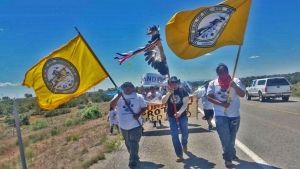
We have environmental justice policies including from the Biden Administration, you know, a lot of talk about Climate Justice and environmental justice from the Biden Administration.
Trump of course didn't even pretend to care about that but you know for a decade you know for so many years we hear this rhetoric but the reality on the ground is different.
Disproportional Impact
Bradley Angel:And this is very true with White Mesa. It is an atrocity. It's an outrage and yeah I should mention we also have you know the sacred site protection laws.
There's also civil rights laws which state that our government, if you receive federal funds you are prohibited under the law, Title VI the U.S Civil Rights Act, from taking actions that have what they call a disproportionate impact on protected classes of people.
That includes indigenous people, so how is it okay that the U.S government themselves, and also how is it the US government allows the state of Utah to turn this tiny community into an international waste facility that desecrates sacred sites, interferes with people and harms people's culture and well-being and is a threat to public health and the environment? And that's why Greenaction exists.
So we were invited and play the role that communities ask us to play.
And in White Mesa we're glad we've been there on the front lines with tribal members, and the Tribe and allies now for more than two decades. And we're seeing traction.
We're seeing more support from diverse allies, indigenous and non-indigenous groups, getting a lot of media attention finally.
But of course the Biden Administration spews this rhetoric that they support environmental employment justice and Indigenous rights, you know, and they've done some good things, like designated Bears Ears.
That's a huge, important National Monument. It's great and they should be commended for that. But right next to Bears Ears they're allowing radioactive materials, so-called alternative feeds, and other radioactive material to be dumped at the uranium Mill.
Robert Lundahl:
Can you talk a little bit about Free Prior and Informed Consent versus the... alternative?
Bradley Angel:
We hear a lot about the environmental justice movement; talks about and native nations that, whether it's a community or a tribe, should have the right to prior informed consent before their homeland and areas and communities are dumped on and poisoned by pollution and, you know, industrial pollution and threats.
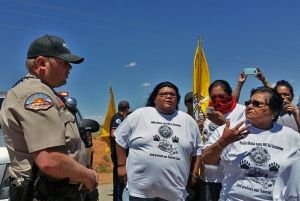
To my knowledge, nobody went and asked the Ute Mountain Ute tribe if you want a giant uranium mill or if you want this uranium mill to turn into a giant International waste facility, before it happened.
The tribe certainly did not give permission to desecrate the burial sites of their ancestors, to destroy ceremonial kivas, import radioactive waste on trucks that go right through the White Mesa Ute community, this small community and so that's a really important concept, but in reality it doesn't happen.
And White Mesa is not the only example (where) it doesn't happen.
Decades ago, again, at the start of Greenaction and work that I was engaged in, just for a few years prior to late ‘97 when Greenaction formed, as I mentioned earlier, working with the Fort Mohave, Quechan, Cocopah, Chemehuevi, Colorado River Indian tribes to fight the proposed Ward Valley nuclear waste dump. Again, off reservation, but clearly it is sacred and traditional land.
The Ward Valley Nuclear Dump
Bradley Angel:As I mentioned earlier, when the federal police were being sent in with the nuclear company and the police were going to try to clear the area of the indigenous and environmental justice protesters who had been camped out at the site, the tribes and Greenaction many others called for defensive, peaceful defense of the site.
It turned into a 113 day standoff and occupation against the police, until the White House had to cave in.
During that struggle, the White House sent the head of the Bureau of Indian Affairs and top White House officials to meet with the tribal government and to demand that– the US government actually threatened the tribes.
I was the non-tribal member invited by the tribes to kind of observe. I was in the back of the room with the elders as all the tribal presidents, chair people and council members were meeting with the White House guys and the White House threatened the tribes.
They said, pretty much quoting verbatim, we do not, we the U.S government does not fund tribes engaged in criminal activity against the U.S government.
You're occupying federal land supposedly illegally. Take down the barricades or you will lose all of your federal funding, and for native nations that's huge.
And there's Dead Silence in the room. And I'm in the back of them thinking, damn the US government, right? This is yet another crime that's going to go down in the history books and literally threatening education, health programs, housing programs, jobs... ...and the tribal leaders asked the feds to leave the room.
The White House guys to left the room, and I knew this was going to be the decision, uh you know the kind of would that nuclear dump happen and the vice president vice chairman of the Fort Mohave Indian Tribe, really an amazing man and a hero and respected by all the river tribes, Llewellyn Barrackman.
He stands up with his cane and says,
- “You know when I was young they took me from my family, and they cut my Mojave hair and they beat me because I just spoke Mojave, and they tried to strip me of my culture and they intimidated us and humiliated us and then he raised us cane and said we cannot be humiliated again. The barricades remain.”
It was one of the most beautiful things of all time in my life as an activist and just human being and everybody cheered and they said, “Bring the feds back in the room.”
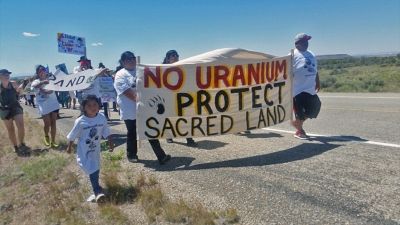
And it was this beautiful moment where the feds come in really cocky, and you know, arrogant, thinking they're going to get the surrender and the tribal leaders tell them the barricades will remain until the nuclear dump project is canceled and the federal government's done.
Before they stormed out of the room, Preston Arrow-weed, a traditional leader from the Quechan Nation turned to the feds and said,
- “Which one of you is going to shoot me? Because that's what it's going to take to get me off this, out of the occupation and stop defending our land.”
And these guys just ran out the door. And it was great. It led to the Great Victory.
I take a couple of minutes to talk about this because that battle and victory has inspired the Quechan and Preston Arrow-Weed to stand up against cyanide leach gold mining at Indian Pass, which was defeated a couple years ago and might come back, but score one for our side.
Greenaction was proud to stand with Preston and the tribal members and tribal government. They're fighting another proposed cyanide leach gold mine called Oro Cruz.
It's inspired the people from White Mesa and beyond, all these people have now been supporting each other and that's a role that Greenaction has helped play is networking and sharing these stories, You can actually win. Do not give up.
That's really important for the people from White Mesa, so every year the Fort Mojave Indian tribe in February sponsors a Victory celebration.
We’re now in, next one this February will be in February 2024, will be the 26th anniversary and I'm glad to say the 25th was the biggest gathering since the occupation.
It's hundreds and hundreds of people. And people from White Mesa came and Preston was there and it's just very inspiring. So when the people from White Mesa return north to their homeland in southern Utah, they return more inspired with more allies and friends.
And now we're working with the White Mesa concerned community and the Ute Mountain Ute tribe and many other allies, but led by the grassroots tribal group and tribal member group.
The Tribe organizing now is reaching out and everybody's invited to come to White Mesa, Saturday October 14th (2023) for what's become an annual spiritual walk in protest.
It's a five mile walk. It kicks off with a rally at the community center and a five mile walk/procession to the uranium mill’s front gate and Bears Ears is there, you know, right there.
Bringing People Together
Bradley Angel:Also directly to the east is sleeping Ute mountain. This is what is so important: just bringing people together and providing backup and support and solidarity and encouraging people not to give up because you can actually win.
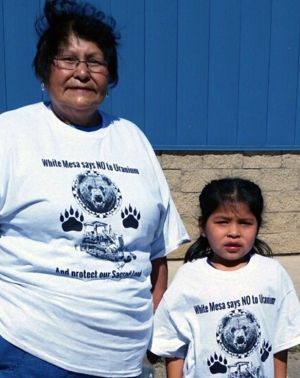
Robert Lundahl:
Well that's amazing because what you've described there, White Mesa, is a high-pressure situation and Ward Valley, obviously, as well.
You have an international community looking to dispose of their waste, so there's multiple energy ministers and countries and policy makers and, you know, they're cooking up the story for the locals and they have things invested in this, and that all comes down on a tiny little community.
Bradley Angel:
Yeah, we were talking about the early days of my work in the late 80’s and as I mentioned, those were issues we fought at the time, to Greenpeace's credit, and it was a lot of my work also.
There was an explosion in proposals; industry proposals to build incinerators to burn toxic waste and garbage waste, solid waste, garbage, and some medical waste proposals.
The west desert of Utah was targeted. That was some of the work I mentioned earlier, all across California dozens and dozens of proposals again from the San Francisco Bay Area, countless proposals in the central San Joaquin Valley and the Imperial Valley and in East L.A and South Central Los Angeles.
A lot of this was driven by an industry and government strategy of targeting what they saw as the most gullible, vulnerable, and easy to build.
You know, get through public opposition and this was easily the reality. You never see these things proposed in rich white communities.
In my work over the years I've dealt with hundreds of these projects and there's no doubt where industry and government targets.
The government actually had the nerve to put this in paper, so back in 1984 I believe, the state of California's Integrated Waste Management Board commissioned a consulting firm called Sorel and Associates and they did an Infamous study.
I'm just paraphrasing the name of the study, something like the political difficulties of siting waste to energy facilities, but basically it was a report and it did not say go dump on poor people of color exactly, but it pretty much says that.
It also lists the characteristics of those communities they saw as most likely to resist, and we all know what those might be, and those least likely to resist, and those were rural, low income, in need of jobs, lower education, and religious. What we saw was primarily low-income people of color communities.
You also saw low-income and working class and highly religious and rural Mormon communities in Utah. And again, as I mentioned, hundreds of people from those communities rose up as well, although the state of Utah rammed a couple of those through.
But when industry ran into roadblocks and fierce opposition they never dreamed would happen from the little farmworker town of Kettleman City, or from the Madres of East Los Angeles, or black community groups in South Central, I'm sure it would have been great to hear those discussions.
It was probably damn! We've tried everything. Who's even more vulnerable? In their minds, where is it easier to get permits?
A Special Deal Just For Us
Bradley Angel:In around 1988 - early ‘89 I started getting calls from indigenous people far across the U.S, saying, “can you tell me what an incinerator is? it doesn't sound good, but one's proposed for our reservation.”
I got a call for example from Navajo people, Diné people in Dilkon, Arizona on the Navajo Nation expressing what's an incinerator we kind of think it's not good. Can you help us? And, there's a company called Waste Tech that says “they really like Navajo people and they have a special deal just for us”, and I was invited to come to Dilkon.
Actually that Victory led to the formation of the Indigenous Environmental Network, but lo and behold I then got a call in the same time period from Chickaloon Village in Alaska, “Hi, um, we were told to call you you might know something about this, um, we need help fighting an incinerator, there's this company called Waste Tech that says they have a special deal just for us”.
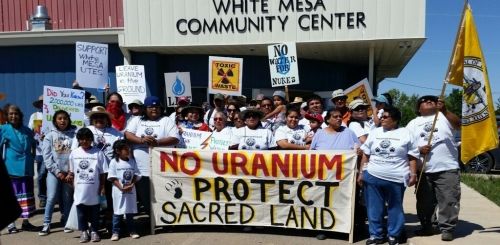
Then I got a call from Vivian Jake and her colleague on the Kaibab Paiute reservation, about a special deal, “just” for that impoverished tribe, via a company called Waste Tech, same from Oklahoma. That’s what industry was like in the 80’s.
The beautiful thing is like 99 percent of those were defeated by the people and led by grassroots opposition in the tribes and sometimes by the tribal government, when they realized what was happening.
Targeting and dumping and dumping industry’s waste, toxics and radioactive waste and stuff that would never be tolerated where the heads of government live, where the heads of these companies live, it continues to be dumped in places like the White Mesa, next to the White Mesa Ute community.
Robert Lundahl:
Well, we happen to be talking about quite a few of them these days, Thacker Pass, Peehee Mu’huh, in the Paiute language, and we're also talking about the so-called “Lithium Valley,” which is in Imperial Valley.
When you're describing low-income communities and people of color and all their vulnerabilities, and we know their air quality problems because of the receding of the waters of the Salton Sea, and the blowing of airborne materials and dust containing herbicides and pesticides, and probably a lot of other chemicals that I'm not even aware of.
So they all have this in common, this targeting and pressure. Is there anything you can say about Lithium Valley? Because that's so obtuse in a way, you know the technology is not really being discussed because they say it's intellectual property and it involves removing lithium from geothermal wells in a second stage process.
No one seems to know how much lithium there is, how long it would be productive for, what the exact impacts are to water and air, and still I presume there are some in CO2 releasing and so forth from the construction and all of that, so there seem to be a lot of hidden costs with “we have a special deal just for you.”
A Gigantic Public Relations Bonanza
Bradley Angel:Exactly. And it's also the lithium boom. It is a very challenging issue, I admit, because it's being framed as a part of the Green Revolution, and getting away from fossil fuels, and to some extent, that's true, and the Thacker Pass project is very different even technology–wise than the Salton Sea and Lithium Valley.
Thacker Pass is just traditional- destroy everything, right? It's on an area very sacred to the indigenous people, a massacre site, and again, even though there's laws, some of which I mentioned earlier, oh it's no big deal, well let's see one of these things proposed in a mainstream religion’s cemetery, right? It's just not going to happen.
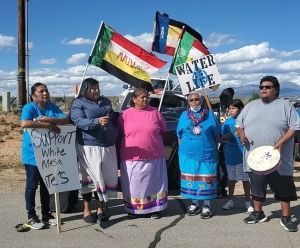
In the Imperial Valley, it's really a gigantic public relations bonanza.
You have these companies joined by local elected officials and the state, all proclaiming this is the greatest thing since sliced bread.
It does appear to be different technology, but the issues that you've mentioned in terms of air pollution, impact on water, hazardous waste disposal is another one, are all issues that need to be looked at more.
The good news is they wouldn't be doing the surface, you know, destroying the whole surface of the environment there, but this is the Imperial Valley. It is already highly impacted.
It's primarily Latino but a lot of indigenous people native nations are there too, and we hear from some of our indigenous colleagues of concerns about the sacredness of the area, and concerns about environmental impacts such as earthquakes that could potentially cause damage from these operations.
When final decisions are made I am not confident based on the track record of our government that they're actually going to properly consider what the impacts are.
Real expected impacts not make believe, real expected impacts from these operations, and what does that mean? What effect will it have on the large population of residents who already suffer high rates of asthma and cancer?
There, people work in the pesticide laden fields–there's terrible air quality– just all types of pollution issues there, and other social socioeconomic impacts that make people more vulnerable and the government's answer right now is all this is dollar signs, right?
But like we see so often, industry tries to placate– sometimes they don't even care, they don't even bother with that– but they try to placate in many instances including what we're seeing in the Imperial Valley opposition or potential opposition, with “oh well, we're going to donate so much, there'll be jobs and community benefits and things like that.
You know, community benefits are great if it's safe, but if it's not safe you can't put a price tag on people's health and lives.
Could drilling activities produce an 8.0 earthquake in the state of California?
Robert Lundahl:Well, you know, community safety is a really interesting question. We were discussing this in one of my other projects, how to build a successful village of the future in Alaska, where many villages are suffering from melting permafrost and may even have to move.
We were coming up with these solutions of how to network people like you're saying, and the importance of that, and my colleague asked, “How can we translate this to Los Angeles?”
And it wasn't exactly the follow-up question that I anticipated, but really it gets to the heart of what you're seeing. Here in California we live in a larger community that includes let's just say for the sake of conversation, everybody, and in the Brawley geothermal field, apparently there was research done correlating the time and location of drilling activities with earthquake swarms in the area.
I know there's a similar study going on involving Dr. Michael McKibben and others related to that location of the geothermal activity at the south end of Salton Sea and its proximity to the San Andreas fault.
Apparently it's much closer, but I have not yet seen research that would indicate that an earthquake swarm triggered in Brawley would have any less impact on the potential fault slippage that has been suggested could well produce an 8.0 earthquake in the state of California.
Lithium Rush
Bradley Angel:I'm not an expert in that but these are all issues that really need to be considered, but if you look at the government websites and industry websites and those Salton Sea, Imperial Valley, the Lithium Commission, it's all rah-rah!
Our our colleagues in the Imperial Valley, including Comité Civico Del Valle, whom we work with on a wide range of issues, pollution and health and justice issues, everybody's trying to get a handle on what are their potential impacts.
How do we understand- is this technology that's being proposed in the Salton Sea, is it really safe? Yes, it appears to be different from, say, the Thacker Pass project but that doesn't mean it's okay.
There's a lithium rush and it's like the gold rush and they're seeing dollar signs. Greenaction's position is if something can be done safely and is really needed, but done safely without harm to people, health, environment, sacred sites, that's a good thing.
We're not convinced that's the case with the Salton Sea projects and only if things are safe and acceptable to the community, then they can talk about community benefits and negotiate that with the community.
Too often when there are dirty industrial projects, and I'll give you an example. In California there's two commercial hazardous Waste landfills. There used to be three including in Westmoreland, right by Brawley.
That dump, thank goodness, closed just a couple years ago, but all three are in Spanish-speaking farmworker communities.
Not a coincidence. All three were approved decades ago with racially discriminatory permit processes. The Kettleman and Buttonwillow facilities that are operating today are operating on expired permits, and again, permits issued years and years and years ago with straight up racism, English only processes with police intimidation of residents.
I'll give an example. Kettleman City itself is an unincorporated town and so Kings County benefits enormously from the tax base from the biggest hazardous waste landfill in the west, run by Waste Management, Chemical Waste Management, The Kettleman Hills Hazardous Waste Facility.
The people of Kettleman City, you know, for many years they had no sidewalks, they had no clean drinking water, they had no street lights, no infrastructure, and it's still pretty much like that.
The only reason Kettleman City has clean drinking water now is thanks to a civil rights complaint and settlement that Greenaction and the community group reached with the state in 2016.
This is another example where the company will donate for school uniforms or they give out little trinkets and Frisbees. Could you imagine giving a Chemical Waste Management trinket from a toxic waste company to kids in their schools?
I mean this is what happens. So they dangle the dollars, right? And our government lets this happen, right? So rather than our government taking care of our lowest income communities they use these as dumping grounds, government-approved dumping grounds.
This is what we call environmental racism. This is what is unjust. And as I mentioned at the start of our discussion, today, the laws we have in this country aren't strong enough, but they're not even enforced, right?
At Greenaction, one of our main missions or I should say strategies, has been to shove the existence of state and federal civil rights laws down the throat of the government.
Years ago, several government agencies told me at one point, “ We don't have to consider civil rights in our permit decisions” around a toxic dumper, and some other nasty polluting industry. I said, “Oh really? I don't recall seeing an exemption for you in the law.”
To Hell With Your Grants
Bradley Angel:So we've been effectively using the law, including to bring clean drinking water to Kettleman City. But these are all issues that affect White Mesa.
White Mesa is a civil rights issue, an indigenous rights issue, a health issue, a justice issue. How is it that the Biden Administration, like every Democratic administration and I might even talk about the Trumps, but you know, because we knew which side they're on, they didn't even pretend to care, but the Biden Administration, Obama, Clinton, they all pretended to care about this stuff.
You know, Clinton had the executive order on environmental justice, but they don't follow these things. It's meaningless. Maybe they'll throw some grants out to some non-profits and that buys off some groups, and that buys their silence; it doesn't buy Greenaction off, that's for sure.
We're like, to hell with your grants to environmental justice communities and organizations, make the right decisions so we don't have to exist.
Do your job. But that doesn't happen in our society, where in our capitalist society where industry profit rules. And so the battle continues, and we will continue working on the front lines with communities, with native nations, with our allies to protect health and promote justice, and achieve it.
A lot of things have changed in the thirty-five or six years I've been doing this work, but what hasn't changed is the anything goes for corporate profit attitude of both industry and government, and so this trouble for justice goes on.
Robert Lundahl:
Well, it sounds like some of these projects that you've discussed are under the Mining Act of 1872, not the disposal of the toxics and so on that we've discussed, but Thacker Pass, Lithium Valley, I think, wouldn't that be the case?
Bradley Angel:
I'm not sure. But again, there's outdated laws, right like the law you just mentioned is quite outdated. But even if certain laws, even if outdated, are on the books, there are other laws that the government is supposed to take into consideration.
There are environmental review laws. In many states from California to the National level, there's attempts to gut the minimal environmental laws that exist in terms of, you know, we're always accused of using some of these laws to hold up important projects, which is a bunch of nonsense.
Just don't propose terrible projects that will have harmful impacts on people and our environment and other living things, right?
Even in San Francisco right now there's an attempt by the supposedly progressive, mainstream mayor, to get some members of the Board of Supervisors to weaken environmental review in San Francisco, and that's the same on the state level, it's the same on the federal level.
So it's a never-ending battle and one of the reasons that as I look back, and Greenaction engages, we don't do a lot of lobbying or legislative work, very minimal, the most important things, but this is why I think that we continue to participate in regulatory and permit processes.
Protecting People's Health and the Environment
Bradley Angel:We do our homework. We're not scientists, but we know scientists, and we're not technical experts, but we know them, and so we do our homework, but I think one of the most important lessons is that some things change and some things don't and action is really, in many cases, what it takes to win.
That's what it took to win in Ward Valley; that's what it takes to win from East L.A and Kettleman City to a cleanup site we're helping Comité Civico Del Valle with in Brawley, where the state was just going to do a partial cleanup of the PureGro pesticide contamination site–not that it's all they're doing a great job but they're doing more than they initially planned.
And we really applaud the indigenous people up at Thacker Pass and want to continue supporting that, but the reality is that our government does not protect people or people's health and the environment, and does not promote justice, certainly for low-income and working class and people of color communities, and that's why standing up and doing homework and fighting for justice has to continue and has to be successful.
Watch the VIDEO below:
[Note: Transcript edited for ease in readability by Bonnie King, Salem-News.com]
Articles for June 28, 2023 | Articles for June 29, 2023


Salem-News.com:
googlec507860f6901db00.html


Terms of Service | Privacy Policy
All comments and messages are approved by people and self promotional links or unacceptable comments are denied.
[Return to Top]
©2025 Salem-News.com. All opinions expressed in this article are those of the author and do not necessarily reflect those of Salem-News.com.